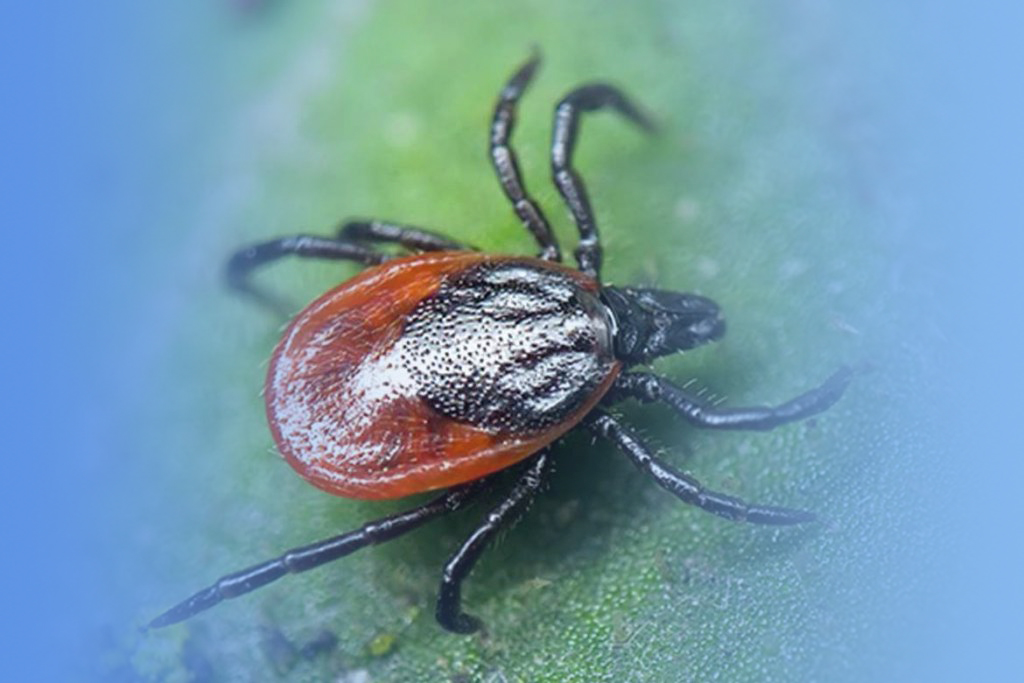[1] General Office of the Ministry of Health of the People's Republic Health of China. Notice on the issuance of "Technical Guidelines for Prevention and Control of Human Granulocytic Anaplasmosis (Trial)". Health Office Emergency Issue [2008]No. 18[EB/OL]. (2008-02-26)[2023-09-27]. http://www.nhc.gov.cn/yjb/s3577/200804/c419dbb1a2a8447d85f63e483719bf98.shtml.(in Chinese)卫生部办公厅. 关于印发《人粒细胞无形体病预防控制技术指南(试行)》的通知. 卫办应急发[2008]18号[EB/OL]. (2008-02-26)[2023-09-27]. http://www.nhc.gov.cn/yjb/s3577/200804/c419 dbb1a2a8447 d85f63e483719bf98.shtml.
[2] Yi J, Kim KH, Ko MK,et al. Human granulocytic anaplasmosis as a cause of febrile illness in Korea since at least 2006[J]. Am J Trop Med Hyg,2017,96(4):777-782. DOI:10.4269/ajtmh.16-0309.
[3] Tsiodras S, Spanakis N, Spanakos G,et al. Fatal human anaplasmosis associated with macrophage activation syndrome in Greece and the public health response[J]. J Infect Public Health,2017,10(6):819-823. DOI:10.1016/j.jiph.2017.01.002.
[4] Zhao HH, Gu PY, Fang M,et al. Human granulocytic anaplasmosis diagnosed by bone marrow blood smear microscopy:A case report[J]. Chin J Clin Med,2022,29(2):293-296. DOI:10.12025/j.issn.1008-6358.2022.20211658.(in Chinese)赵浩宏,谷培云,方媚,等. 骨髓血涂片镜检诊断人粒细胞无形体病1例报告[J]. 中国临床医学,2022,29(2):293-296. DOI:10.12025/j.issn.1008-6358.2022.20211658.
[5] Jin HT, Wei F, Liu Q,et al. Epidemiology and control of human granulocytic anaplasmosis:A systematic review[J]. Vector Borne Zoonotic Dis,2012,12(4):269-274. DOI:10.1089/vbz. 2011. 0753.
[6] Kim KH, Yi J, Oh WS,et al. Human granulocytic anaplasmosis,South Korea,2013[J]. Emerg Infect Dis,2014,20(10):1708-1711. DOI:10.3201/eid2010.131680.
[7] Zhang HZ, Yin JX. Epidemic situation and influential factors of human granulocytic anaplasmosis in China[J]. Chin J Zoonoses,2018,34(5):478-481. DOI:10.3969/j.issn.1002-2694. 2018. 00.070.(in Chinese)张宏泽,尹家祥. 中国人粒细胞无形体病流行现状及其影响因素[J]. 中国人兽共患病学报,2018,34(5):478-481. DOI:10.3969/j.issn.1002-2694.2018.00.070.
[8] Liu ZJ, Zheng L, Zhang AQ,et al. Research progress of clinical epidemiology,prevention and treatment on human granulocytic anaplasmosis[J]. Chin J Hyg Insect Equip,2018,24(5):417-422. DOI:10.19821/j.1671-2781.2018.05.001.(in Chinese)刘增加,郑龙,张爱勤,等. 人粒细胞无形体病临床流行病学与防治研究现状[J]. 中华卫生杀虫药械,2018,24(5):417-422. DOI:10.19821/j.1671-2781.2018.05.001.
[9] Wang K, Gui YY, Li X,et al. Advances in molecular biological detection methods of tick-borne Anaplasma phagocytophilum[J]. Prev Med Tribune,2023,29(4):311-314,320. DOI:10.16406/j.pmt.issn.1672-9153.2023.4.016.(in Chinese)王珂,桂雨阳,李迅,等. 蜱传嗜吞噬细胞无形体分子生物学检测方法的研究进展[J]. 预防医学论坛,2023,29(4):311-314,320. DOI:10.16406/j.pmt.issn.1672-9153.2023.4.016.
[10] Tao LY, Liang Z, Bao FK,et al. Progress in study of human granulocytic anaplasmosis in China[J]. China Trop Med,2017,17(2):193-197. DOI:10.13604/j.cnki.46-1064/r.2017.02.23.(in Chinese)陶律延,梁张,宝福凯,等. 中国人粒细胞无形体病的研究进展[J]. 中国热带医学,2017,17(2):193-197. DOI:10.13604/j.cnki.46-1064/r.2017.02.23.
[11] Zhou Q, He Z, Shao ZJ. Epidemiological characteristics and progress in clinical diagnosis of Anaplasma phagocytophilum[J]. Chin J Hyg Insect Equip,2022,28(2):184-187. DOI:10.19821/j.1671-2781.2022.02.022.(in Chinese)周琦,贺真,邵中军. 嗜吞噬细胞无形体的流行特征及临床诊断进展[J]. 中华卫生杀虫药械,2022,28(2):184-187. DOI:10.19821/j.1671-2781.2022.02.022.
[12] Zheng W, Ma ZC, Zhang H,et al. Screening and bioinformatic analysis of THP-1 target protein(s) interacted with Msp2 of Anaplasma phagocytophilum[J]. Prog Mod Biomed,2019,19(14):2657-2661. DOI:10.13241/j.cnki.pmb.2019.14.011.(in Chinese)郑炜,马忠臣,张辉,等. 嗜吞噬无形体Msp2蛋白与宿主互作靶蛋白筛选及生物信息分析[J]. 现代生物医学进展,2019,19(14):2657-2661. DOI:10.13241/j.cnki.pmb.2019.14.011.
[13] Zhao Y, Liu R, Zhang GL,et al. Seroepidemiological investigation of tick-borne diseases in a border guard force in northern Xinjiang[J]. J Prev Med Chin PLA,2014,32(4):324-325. DOI:10.13704/j.cnki.jyyx.2014.04.012.(in Chinese)赵焱,刘然,张桂林,等. 新疆北部某边防部队蜱传疾病血清流行病学调查[J]. 解放军预防医学杂志,2014,32(4):324-325. DOI:10.13704/j.cnki.jyyx.2014.04.012.
[14] Jiao XY, Fan ZC, Li YZ,et al. Clinical and laboratory features parameters of human granulocytic anaplasmosis (HGA) in patients admitted to hospital in Guangdong Province,China[J]. Trop Doct,2015,45(4):209-213. DOI:10.1177/0049475515579772.
[15] Zhang LJ. Progress in research of Anaplasma phagocytophilum and anaplasmosis in China[J]. Dis Surveill,2014,29(4):409-414. DOI:10.3784/j.issn.1003-9961.2014.05.019.(in Chinese)张丽娟. 中国嗜吞噬细胞无形体及无形体病研究进展[J]. 疾病监测,2014,29(5):409-414. DOI:10.3784/j.issn.1003-9961.2014.05.019.
[16] Cheng ZX, Yang XX, Li Q,et al. Epidemiological characteristic of epidemic situation about the human-infected granulocytic anaplasmosis in southern Anhui[J]. Chin J Dis Control Prev,2009,13(1):4-7. DOI:CNKI:SUN:JBKZ.0.2009-01-003.(in Chinese)程周祥,杨小祥,李群,等. 皖南地区2006年一起人传"粒细胞无形体病”疫情的流行病学特征[J]. 中华疾病控制杂志,2009,13(1):4-7. DOI:CNKI:SUN:JBKZ.0.2009-01-003.
[17] Wang H, Cao G, Sun G,et al. Research progress on epidemiological characteristics and detection methods of common tick-borne diseases in China[J]. Chin J Vector Biol Control,2022,33(5):765-770. DOI:10.11853/j.issn. 1003. 8280. 2022. 05.028.(in Chinese)王晗,曹淦,孙刚,等. 我国常见蜱传疾病的流行特征和检测方法研究进展[J]. 中国媒介生物学及控制杂志,2022,33(5):765-770. DOI:10.11853/j.issn.1003.8280.2022.05.028. |



